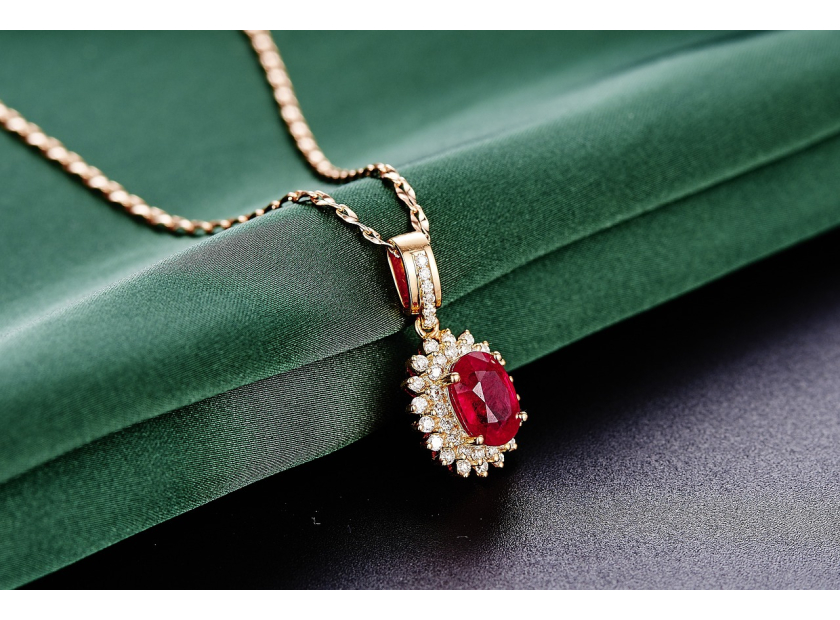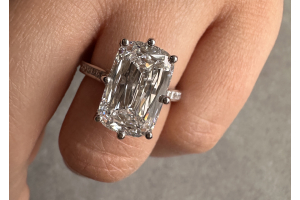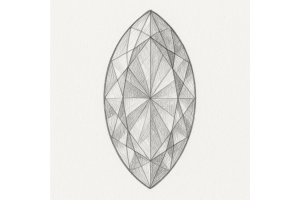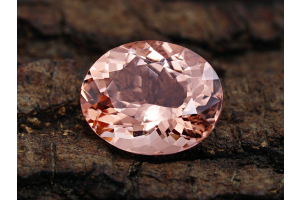GBP
/
GBP
/
Shipping to:
Currency:
Are Rubies Expensive? A Friendly Guide to Understanding Ruby Prices
Rubies have captivated people for centuries with their deep, rich red hues and remarkable durability. As one of the most sought-after gemstones, many wonder: are rubies expensive?
The short answer: yes — but not always in the way you might expect. In this guide, we'll explore what influences the cost of rubies, why they hold such enduring value, and how to buy one smartly, whether it’s for an engagement ring, a gift, or a personal treat.
What Influences the Cost of Rubies?
Several key factors affect ruby pricing, including the Four Cs, origin, and any treatments the stone may have received. Understanding these will help you shop more confidently, especially when browsing collections like gemstone engagement rings or bespoke pieces.
The Four Cs: Colour, Clarity, Carat, and Cut
- Colour: The most important quality marker. The finest rubies display a rich, vivid red known as “pigeon blood”. These are extremely rare and highly valued.
- Clarity: Like most gemstones, rubies often contain natural inclusions. Stones with fewer visible inclusions typically command higher prices.
- Carat: Larger rubies increase in price per carat much more sharply than diamonds due to their rarity.
- Cut: A well-cut ruby maximises its brilliance and can enhance both its colour and clarity.
Origin: Where Do Rubies Come From?
The source of a ruby can significantly impact its value:
- Myanmar (Burma): Famous for producing some of the world’s most exquisite rubies, especially the coveted pigeon blood variety.
- Mozambique: Known for high-quality rubies that are becoming more popular and respected within the trade.
- Thailand and Sri Lanka: More budget-friendly sources, though top-quality rubies from these regions can still be quite valuable.
To better understand the natural origins of rubies and other precious stones, you may enjoy reading about how and where gemstones and diamonds are formed.
Treatments: Natural vs. Enhanced Rubies
Most rubies are treated in some way to enhance their appearance. The most common treatment is heat, which improves colour and clarity without compromising integrity. Untreated rubies with exceptional colour and clarity are rare and significantly more expensive. Some lower-cost stones are filled with lead glass — a treatment that boosts appearance but affects durability and value.
Always ask for certification and treatment disclosure when shopping, particularly when browsing collections like non-traditional engagement rings, where unique gemstones like rubies are increasingly popular.
Understanding Ruby Pricing
Ruby prices vary widely depending on quality, size, and treatment. A commercial-grade ruby could cost a few hundred pounds per carat, while a high-quality untreated stone from Myanmar could fetch tens of thousands. For instance, a 2-carat Burmese ruby with heat treatment might be valued around £10,000 per carat. An untreated stone of similar quality could reach £25,000 or more. These figures can fluctuate with market demand and rarity.
When considering ruby jewellery for gifting, browsing a curated selection of gemstone rings can help you compare styles, sizes, and prices.
Why Are Rubies So Valuable?
Rubies are one of the rarest and most historically cherished gemstones in the world. Here's why:
- Rarity: High-quality rubies are rarer than diamonds, especially in larger sizes or those with strong colour saturation and few inclusions.
- Cultural and Historical Significance: Rubies have long symbolised wealth, passion, and protection. They’ve adorned royalty for centuries.
- Durability: Rubies score a 9 on the Mohs scale, just below diamonds. This makes them an excellent choice for everyday wear, especially in engagement or wedding jewellery.
How to Buy a Ruby Without Overspending
Shopping smart can help you bring home a ruby without blowing your budget. Here’s how:
- Go Smaller: A ruby under one carat can still be stunning but far more affordable than a larger stone.
- Consider Heat-Treated Rubies: These are far more common and accessible in price — many look visually identical to untreated ones.
- Explore Lab-Created Rubies: They share the same physical and chemical properties as natural stones but cost significantly less. If you're weighing up options, it’s worth reading about the difference between lab-grown and natural gemstones.
- Opt for Simulants or Alternative Gemstones: Garnet or red spinel can give you that ruby look at a fraction of the cost.
Are Rubies a Good Investment?
They can be, especially if you invest in untreated rubies from reputable origins such as Myanmar. Historically, high-end rubies have held or increased their value, particularly rare, certified stones. But as with any investment in gemstones, do it because you love the piece — not just for the potential return. Market trends can shift, and resale value depends on timing, certification, and condition.
Frequently Asked Questions
How much does a ruby cost on average?
Rubies can range from £200 per carat for lower-grade stones to £20,000+ per carat for untreated, high-quality gems. The average cost depends heavily on quality and size.
Are rubies more expensive than diamonds?
They can be. A top-quality ruby, especially one that’s untreated and over one carat, can cost more per carat than many diamonds.
Why are Burmese rubies more expensive?
Burmese rubies are highly prized for their colour, clarity, and rarity — especially those with the ‘pigeon blood’ red tone.
Can I find an affordable ruby?
Yes. Consider treated or lab-created stones, or look at smaller carat weights. You can find beautiful, genuine rubies in collections like gemstone engagement rings without going over budget.
How do I know if a ruby is real?
Always buy from a trusted jeweller and request a certificate from a reputable gemological lab. This confirms authenticity and any treatments.
Whether you’re shopping for a ruby ring, planning an engagement, or simply curious about the question are rubies expensive, knowing what affects their price and value helps you shop smarter. Explore all your options — from natural gems to ethical lab-created alternatives — and choose a piece that speaks to your style, values, and budget.








